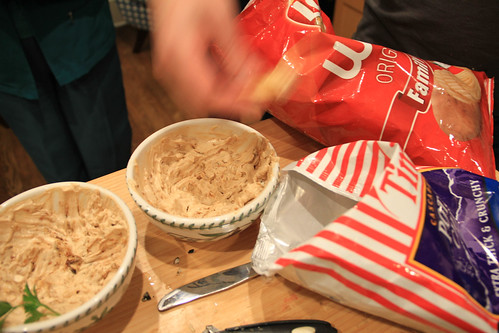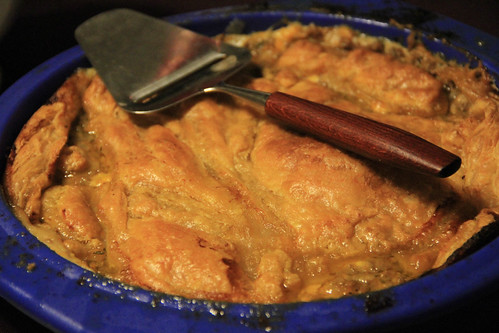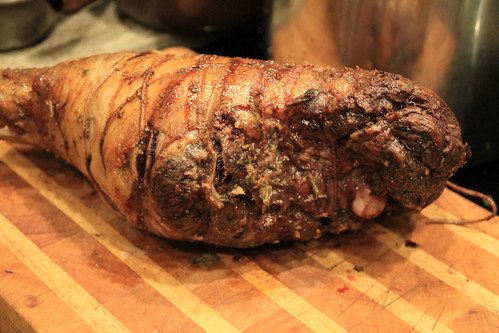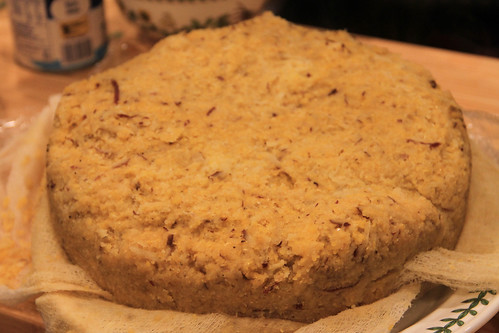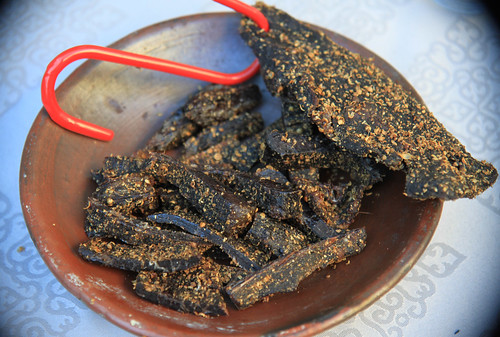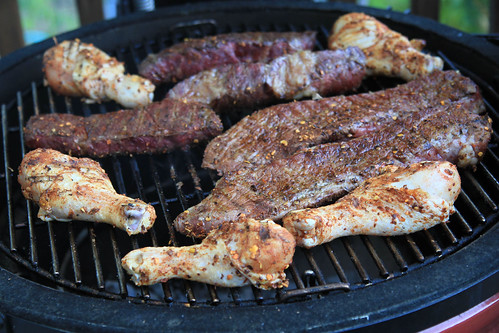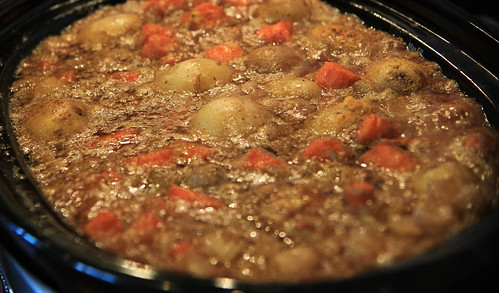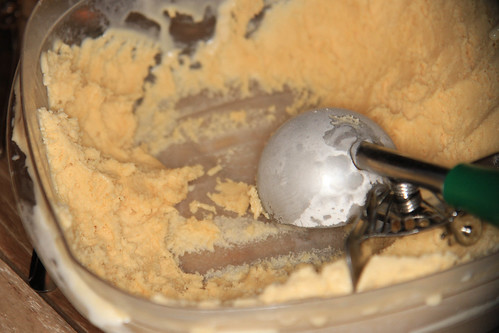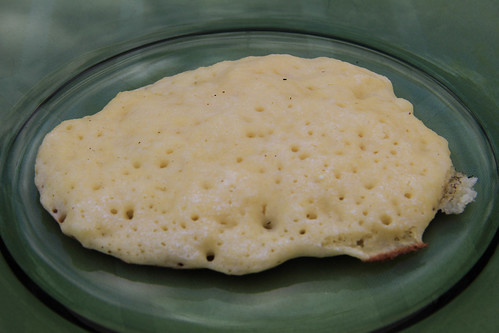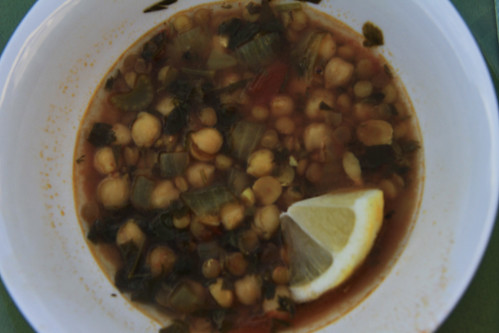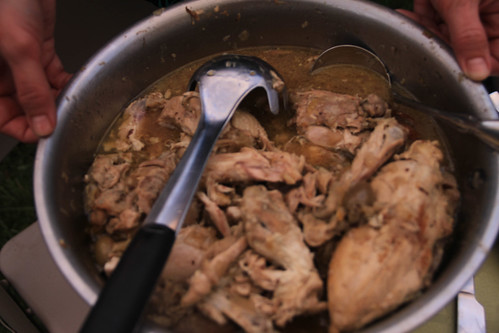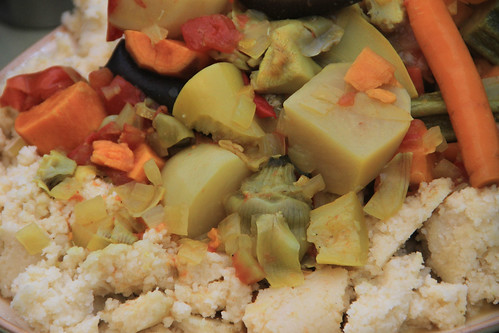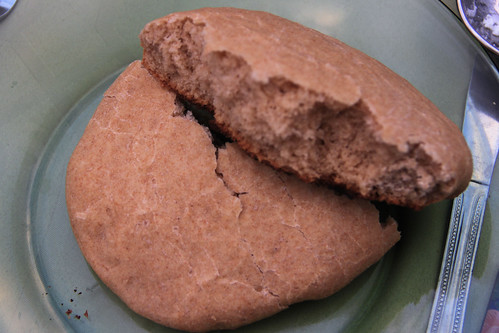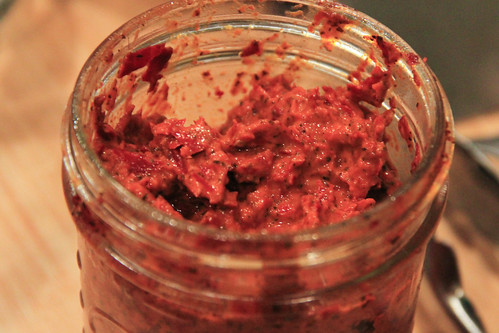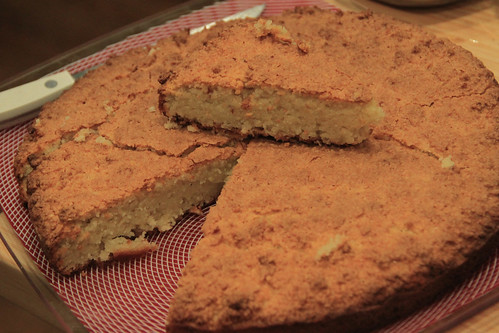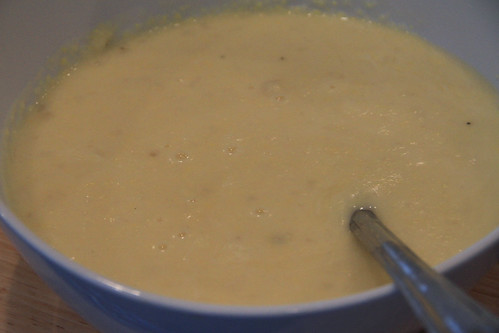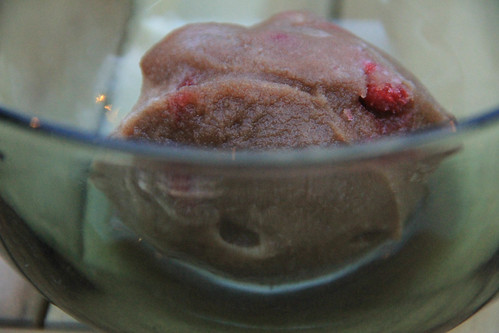Niger is Nigeria's much lesser known northern neighbor. To reduce the inevitable confusion, its English pronunciation imitates the French: nee-ZHEHR, and the demonym is Nigerien, with only that second E providing the needed distinction. It's a Sahel nation, meaning it's in the transition zone between the Sahara and the tropical West African coast. Mercy Corps, our fundraising beneficiary, does a lot of work in Niger, including both emergency food relief and helping farmers improve their long-term resilience. Joining us for the meal were Kal, Douglas, Annette, Eric, Robin, Cara and friends. We were also honored to welcome Issa, a recent refugee from Chad, which has a somewhat similar cuisine, so he very kindly pointed out which dishes worked and didn't.

Sugar peanuts | Recipe (scroll down)
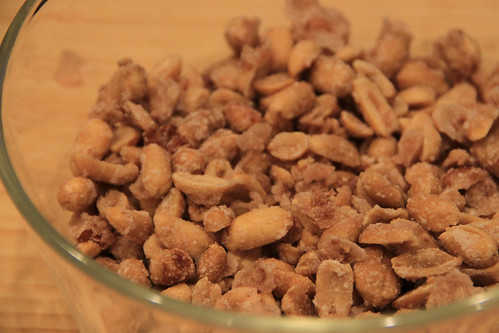
Pour peanuts into a pan, stir in a bunch of sugar and some water, and bake until the water evaporates and you're left with caramelized peanuts. What an easy snack to make! It's a great start to a meal.
Masa | Yeasted rice pancakes | Recipe
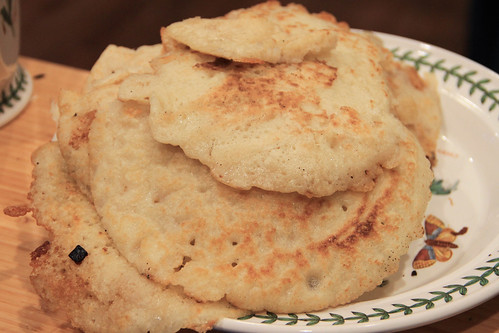
I can't imagine how tedious it would be to make this dish without an electric blender to grind soaked raw rice into a batter, but I tip my hat in salute to the (most likely) women who've been doing it a long time, because the result is really tasty and satisfying. The yeast gives a little tang and volume, and the rice is thick enough that once the outside of the pancake gets crisp from the griddle, the inside is still soft, so it's got a lot of texture and flavor going on. Issa said it reminded him a whole lot of the ones he ate growing up!
Greens with handmade couscous
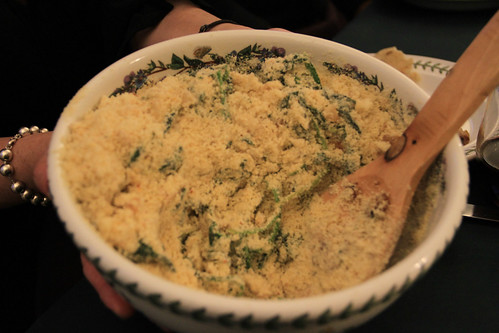
I can't find the recipe I used to make this, but I wouldn't recommend it anyway. While it instructive to make couscous from scratch from millet flour, it took a long time and a lot of work and the result was hardly distinguishable from a decent pre-made couscous. Enough people talk about the wonder of fresh-made couscous that I have to figure it was some failure on my part. And anyway, once mixed with the greens, it was just kinda dry and disappointing. As Issa said, "I'm not really sure what you were trying to do here."
Mo & dungiri | Rice and black-eyed peas | Recipe
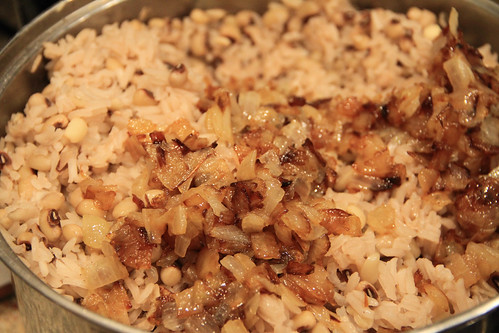
This dish is a great way to fill up, and on its own it's not terribly flavorful. The real star of the show is the peanut-bouillon spice powder in the recipe, which frankly went great on everything in the meal.
Tukasu | Lamb in date sauce | Recipe
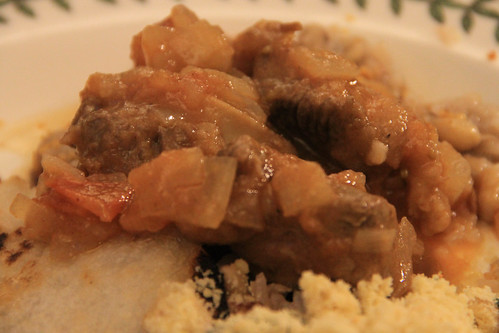
I cooked just about the same dish for Mali, but it was so good I couldn't help doing it again. I love lamb, I love dates, and I love spices, and it turns out the three of them together with some vegetables to make a rich sauce is a super winner. The only major change from last time is that I left out the steamed bread balls, because there was quite enough starch from the rest of the meal.
Fruit salad

Used what tropical fruits were good at the market: pineapple, blood orange, and mango.

